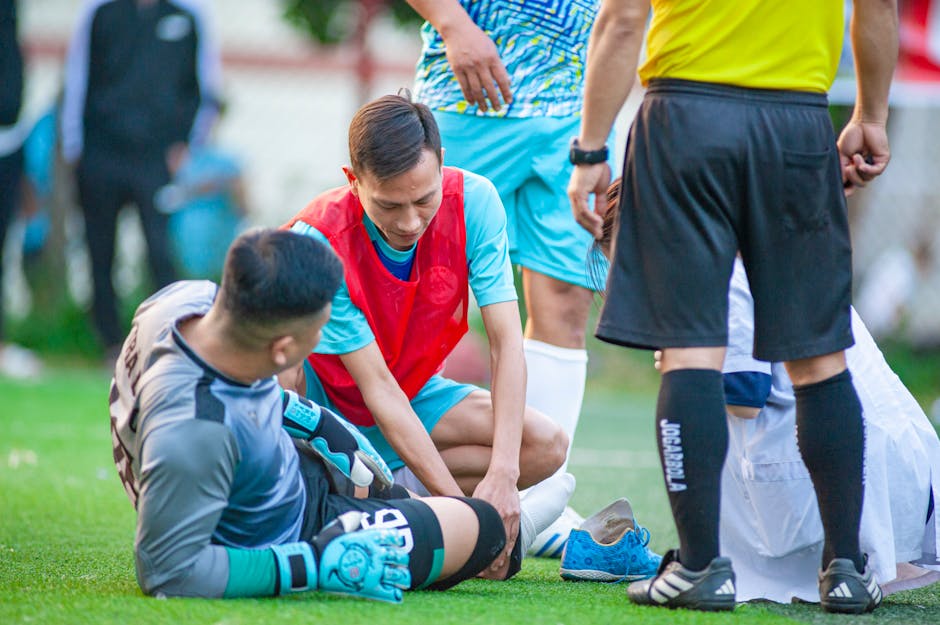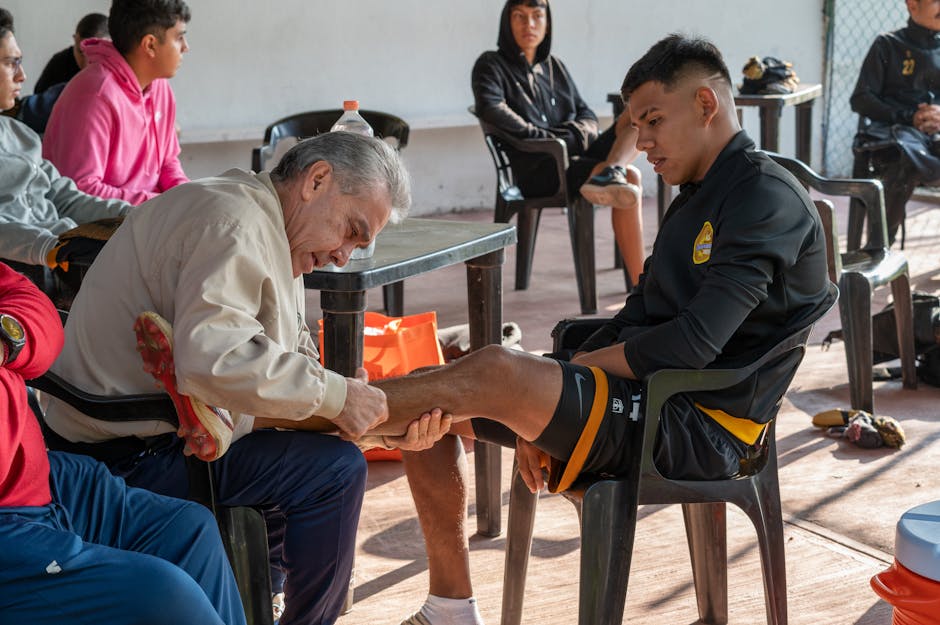The Essential Role of Physical Therapy in Sports Injuries
Sports injuries are an unfortunate but inevitable part of an athlete’s journey. From sprains and strains to more severe injuries like fractures and dislocations, athletes are often faced with the challenge of recovering and returning to their sport as quickly and safely as possible. This is where physical therapy plays a crucial role in the rehabilitation process.
Physical therapists are healthcare professionals who are trained to help individuals recover from injuries, reduce pain, and improve mobility. When it comes to sports injuries, physical therapy is an essential component of the recovery process, helping athletes regain strength, flexibility, and function. In this article, we will explore the role of physical therapy in sports injuries, its benefits, and how it can help athletes get back to doing what they love.
The Importance of Early Intervention

One of the key principles of physical therapy in sports injuries is early intervention. When an athlete sustains an injury, whether it’s a muscle strain, ligament tear, or joint dislocation, it’s crucial to start physical therapy as soon as possible. Early intervention not only helps in reducing pain and swelling but also prevents secondary complications such as muscle atrophy and joint stiffness.
Physical therapists work closely with athletes to develop personalized treatment plans that address their specific injury and goals. These plans often include a combination of exercises, manual therapy, modalities such as ultrasound and electrical stimulation, and education on injury prevention. By starting physical therapy early, athletes can expedite their recovery process and minimize the risk of re-injury.
Restoring Functional Movement

Another important aspect of physical therapy in sports injuries is restoring functional movement. Injuries can often lead to limitations in range of motion, strength, and flexibility, which can impact an athlete’s performance on the field or court. Physical therapists are trained to assess these limitations and develop specific exercises and interventions to address them.
Through a combination of stretching, strengthening, and conditioning exercises, physical therapists help athletes regain functional movement patterns and improve their overall performance. For example, a basketball player recovering from an ankle sprain may work on balance exercises to improve stability and prevent future injuries. By restoring functional movement, physical therapy not only helps athletes recover from their injuries but also enhances their athletic abilities.
Preventing Secondary Complications

Sports injuries can have long-term effects on an athlete’s body if not managed properly. For example, an untreated knee injury can lead to chronic pain, arthritis, and even permanent disability. Physical therapy plays a crucial role in preventing these secondary complications by addressing the root cause of the injury and promoting proper healing.
Physical therapists use a variety of techniques to reduce pain, inflammation, and muscle imbalances that can contribute to secondary complications. They also educate athletes on proper body mechanics, training techniques, and injury prevention strategies to reduce the risk of future injuries. By taking a proactive approach to rehabilitation, physical therapy helps athletes not only recover from their current injuries but also prevent future ones.
Enhancing Performance

While physical therapy is often associated with injury rehabilitation, it also plays a significant role in enhancing athletic performance. Many professional athletes incorporate physical therapy into their training regimen to improve strength, flexibility, and endurance, which can help them reach their full potential on the field or court.
Physical therapists work closely with athletes to identify areas of weakness or limitation and develop targeted exercises to address them. For example, a runner experiencing hip pain may benefit from specific strengthening exercises to improve hip stability and prevent future injuries. By optimizing biomechanics and movement patterns, physical therapy can help athletes perform at their best and achieve their athletic goals.
Returning to Sport Safely
One of the primary goals of physical therapy in sports injuries is to help athletes return to their sport safely. Physical therapists collaborate with athletes, coaches, and other healthcare professionals to develop comprehensive rehabilitation plans that address both the physical and psychological aspects of recovery.
Physical therapists use objective measures such as strength testing, range of motion assessments, and functional movement screens to determine when an athlete is ready to return to sport. They also provide guidance on gradual progression, injury prevention strategies, and modifications to training programs to reduce the risk of re-injury. By focusing on a safe and structured return to sport, physical therapy helps athletes resume their athletic pursuits with confidence and resilience.
Common Misconceptions about Physical Therapy in Sports Injuries
Despite its many benefits, there are some common misconceptions about physical therapy in sports injuries that may deter athletes from seeking treatment. One of the most common misconceptions is that physical therapy is only for serious injuries or post-surgical rehabilitation. In reality, physical therapy can benefit athletes with a wide range of injuries, from minor sprains to more complex conditions.
Another misconception is that physical therapy is painful and uncomfortable. While some rehabilitation exercises may cause temporary discomfort, physical therapists are trained to ensure that treatment is safe, effective, and tailored to the individual’s needs. By addressing these misconceptions and educating athletes on the benefits of physical therapy, healthcare professionals can help more athletes overcome injuries and achieve optimal performance.
Conclusion
Physical therapy plays a critical role in the management and rehabilitation of sports injuries, helping athletes recover, regain function, and prevent future complications. By providing early intervention, restoring functional movement, preventing secondary complications, enhancing performance, and facilitating a safe return to sport, physical therapy empowers athletes to overcome injuries and reach their full potential.
Whether you’re a professional athlete or a weekend warrior, incorporating physical therapy into your recovery plan can make a significant difference in your overall health and performance. By working with a skilled physical therapist, you can expedite your recovery, reduce the risk of re-injury, and improve your athletic abilities in the long run.
Remember, sports injuries are a part of the game, but with the right support and guidance from a physical therapist, you can bounce back stronger and better than ever. So, don’t underestimate the power of physical therapy in sports injuries it could be the key to unlocking your full athletic potential.




